5 Severe crowding
Summary
Amy, an almost 11-year-old girl, presents with marked space shortage for both unerupted 3’s (Fig. 5.1). What has caused this problem and how may it be treated?
History
Medical history
Examination
Intraoral
 The intraoral views are shown in Figures 5.1 and 5.2. Describe what you see.
The intraoral views are shown in Figures 5.1 and 5.2. Describe what you see.
Poor oral hygiene with plaque deposits visible on several teeth and associated generalized gingival marginal erythema.
Stained occlusal fissures in  , brown staining on the mesial of
, brown staining on the mesial of  and decalcification at the gingival margin level on the buccal aspects of
and decalcification at the gingival margin level on the buccal aspects of  ; fissure sealants are visible in the occlusal surface of the first permanent molars.
; fissure sealants are visible in the occlusal surface of the first permanent molars.  has a mildly hypoplastic palatal cusp (this was non-carious).
has a mildly hypoplastic palatal cusp (this was non-carious).
 , brown staining on the mesial of
, brown staining on the mesial of  and decalcification at the gingival margin level on the buccal aspects of
and decalcification at the gingival margin level on the buccal aspects of  ; fissure sealants are visible in the occlusal surface of the first permanent molars.
; fissure sealants are visible in the occlusal surface of the first permanent molars.  has a mildly hypoplastic palatal cusp (this was non-carious).
has a mildly hypoplastic palatal cusp (this was non-carious).All permanent teeth present from second permanent molar to second permanent molar in the lower arch ( are partially erupted); in the upper arch, all permanent teeth (except 3’s) erupted from second permanent molar to second permanent molar.
are partially erupted); in the upper arch, all permanent teeth (except 3’s) erupted from second permanent molar to second permanent molar.
 are partially erupted); in the upper arch, all permanent teeth (except 3’s) erupted from second permanent molar to second permanent molar.
are partially erupted); in the upper arch, all permanent teeth (except 3’s) erupted from second permanent molar to second permanent molar.Mild lower labial segment crowding with  mesiolabially rotated;
mesiolabially rotated;  slightly mesially inclined and
slightly mesially inclined and  upright.
upright.
 mesiolabially rotated;
mesiolabially rotated;  slightly mesially inclined and
slightly mesially inclined and  upright.
upright.Severe upper labial segment crowding; 2’s very slightly mesiolabially rotated; both 3’s are about to erupt buccal to the line of the arch;  is more buccally positioned than
is more buccally positioned than  .
.
 is more buccally positioned than
is more buccally positioned than  .
.Upper buccal segments are not crowded; there is mesiopalatal rotation of  and distopalatal rotation of
and distopalatal rotation of  ; small amount of space on either side between the premolar teeth and between the first premolars and lateral incisors.
; small amount of space on either side between the premolar teeth and between the first premolars and lateral incisors.
 and distopalatal rotation of
and distopalatal rotation of  ; small amount of space on either side between the premolar teeth and between the first premolars and lateral incisors.
; small amount of space on either side between the premolar teeth and between the first premolars and lateral incisors. What are the likely causes of the severe upper arch crowding?
What are the likely causes of the severe upper arch crowding?
• Inherent dentoalveolar disproportion manifesting as crowding – this is genetically determined and represents a mismatch in tooth and alveolus size. Added to this, the maxillary canines are the last permanent teeth to erupt anterior to the first permanent molars and are often squeezed buccally in a crowded arch.
• Early loss of primary teeth – this leads to mesial drift of the buccal segments and aggravates crowding.
 What factors influence the rate of space loss following early loss of a primary molar? What are the effects of early loss of a primary molar?
What factors influence the rate of space loss following early loss of a primary molar? What are the effects of early loss of a primary molar?
Table 5.1 Factors affecting the rate of space loss following early loss of a primary molar
| Factor | Effect* |
|---|---|
| Age at loss | The younger the age at loss, the greater the potential for space loss |
| Degree of crowding | The more crowded the arch, the more space that will be lost |
| Tooth extracted | Early loss of an e, rather than of a d, is likely to lead to more space loss (see below regarding arch). 5’s may erupt and be excluded palatally/lingually or be impacted; 5 may be in crossbite; centreline shift if asymmetrical extraction and in case of e, if early loss before age 7 |
| Arch from which tooth is lost | Greater loss is likely in the upper, rather than in the lower arch, as mesial drift tendency is greater in the former |
| Type of occlusion | Less space loss will occur where good buccal interdigitation exists |
Stay updated, free dental videos. Join our Telegram channel

VIDEdental - Online dental courses


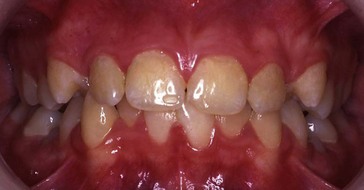

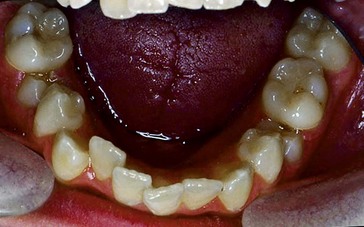
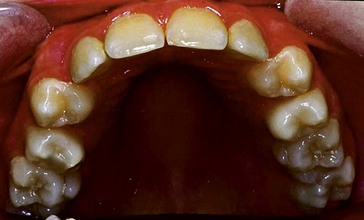
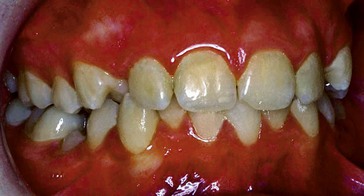
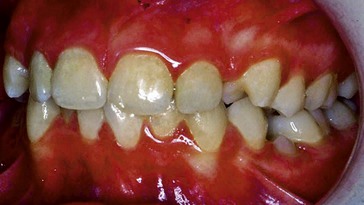

 ?
? affecting amelogenesis, often referred to as a Turner’s tooth or Turner’s hypoplasia.
affecting amelogenesis, often referred to as a Turner’s tooth or Turner’s hypoplasia.